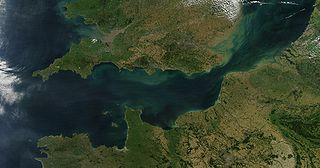
Scapa Flow is a body of water in the Orkney Islands, Scotland, sheltered by the islands of Mainland, Graemsay, Burray, South Ronaldsay and Hoy. Its sheltered waters have been used by ships since prehistory and it has played an important role in travel, trade and conflict throughout the centuries – especially during both World Wars.

ORP Orzeł was the lead ship of her class of submarines serving in the Polish Navy during World War II. Her name means "Eagle" in Polish. The boat is best known for the Orzeł incident, her escape from internment in neutral Estonia during the early stages of the Second World War.
HMS P41 was a Royal Navy U-class submarine built by Vickers-Armstrong. She was transferred to the exiled Royal Norwegian Navy before completion and renamed HNoMS Uredd. She and one of the B-class in 1940 have so far been the only Norwegian submarine to have been sunk.

HMS Seahorse was a first-batch S-class submarine built for the Royal Navy during the 1930s. Ordered in March 1931, she was laid down at Chatham Dockyard in September 1931 and launched on 15 November 1932.
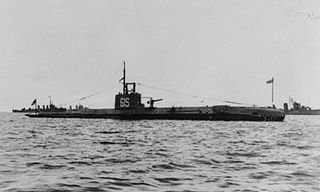
HMS Swordfish (61S) was a first-batch S-class submarine built for the Royal Navy during the 1930s. Commissioned in 1932, she was given the pennant number 61S and was assigned to the 2nd Submarine Flotilla.
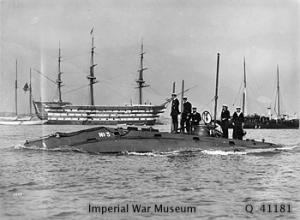
Holland 5 was the last of the five Holland-class submarines ordered by the British Admiralty to evaluate the potential of the submarine with the Royal Navy. She was one of the first submarines to be accepted into Royal Navy service, and unique to her class, she carried one of the earliest periscopes. By the time she was launched, a number of A class submarines had already been ordered to replace this class in navy service.

The British H-class submarines were Holland 602 type submarines used by the Royal Navy. The submarines constructed for the British Royal Navy between 1915 and 1919 were designed and built in response to German boats which mined British waters and sank coastal shipping with ease owing to their small size. The H class was created to perform similar operations in German waters, and to attack German submarines operating in British waters.

HMSOlympus was an Odin-class submarine, a class originally designed for the Royal Australian Navy to cope with long distance patrolling in Pacific waters. Olympus was built to the same design for the Royal Navy. She served from 1931 to 1939 on the China Station and 1939-1940 out of Colombo. In 1940 she went to the Mediterranean. She was sunk by a mine off Malta in May 1942. Her last commanding officer was Lt. Commander Herbert George Dymott, who was one of the 89 crew members killed in the sinking.
Y-1 Katsonis was a Greek submarine active during the Second World War. Katsonis, together with her sister ship, Papanikolis, formed the first class of Greek submarines ordered after the First World War. The submarine was built at the Gironde Bordeaux shipyards between 1925–27, and commissioned into the Hellenic Navy on 8 June 1928. Her first captain was Cdr Κ. Arvanitis.

HMS Firedrake was a modified Acheron-class destroyer, named after the firedrake of Teutonic mythology, and the sixth ship of the Royal Navy to bear the name.
Three submarines of the French Navy have borne the name Doris:
SM U-31 was one of the 329 submarines serving in the Imperial German Navy in World War I. U-31 was engaged in the naval warfare and took part in the First Battle of the Atlantic.

Fujikawa Maru was a cargo ship originally built in 1938 for the Toyo Kaiun Kisen Kaisha and was requisitioned by the Imperial Japanese Navy during World War II for use as an armed aircraft transport or ferry. She was sunk in Truk Lagoon in 1944 during Operation Hailstone and is now a leading wreck diving site for scuba divers.
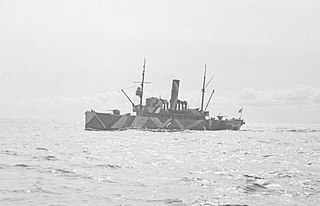
Louhi was a Finnish Navy minelayer. The ship was originally constructed for the Imperial Russian Navy but was taken over by the Finns during the Russian Civil War. She had originally been named Voin, but was renamed as M1 in Finnish service. In 1936 she was given the more personal name Louhi, following the procedure of all other major ships in the Finnish navy.
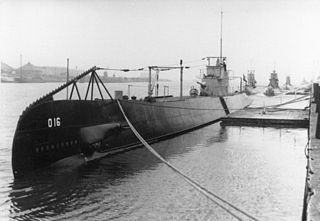
O 16 was a unique submarine of the Royal Netherlands Navy that saw service during World War II. The design came from G. de Rooij and had a diving depth of 80 metres (260 ft). She was the first submarine of the Royal Netherlands Navy manufactured from high quality Steel 52. Also riveting was reduced 49% and replaced by welding when compared to preceding ships.

O 13 was an O 12-class submarine of the Royal Netherlands Navy that saw service during World War II. She was built by the Koninklijke Maatschappij De Schelde of Vlissingen. She was one of many Dutch ships doing convoy duty during the Spanish Civil War. At the time of the German invasion of the Netherlands, O 13 was on patrol off the Dutch coast and was attacked by German planes on multiple occasions. After fleeing to England, the sub was lost during a patrol on the North Sea.
The following index is provided as an overview of and topical guide to recreational dive sites:

Recreational dive sites – Specific places that recreational divers go to enjoy the underwater environment or are used for training purposes






